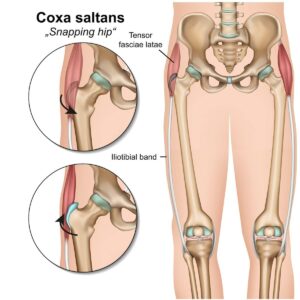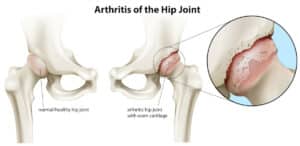Free download: Top 10 Natural & Easy Remedies for Joint Pain from Home. Learn these helpful remedies.
Estimated Reading Time: 7 minutes read
Hip replacement surgery has become more commonly known and performed over the years to treat severe hip pain that has failed all other conservative measures.
The most common reason for needing a total hip replacement is due to significant osteoarthritis.
Other potential medical reasons that would require a hip replacement include examples such as a damaged or diseased bone, inflammatory conditions that damage the hip joint, or fractures such as from a fall or other trauma.
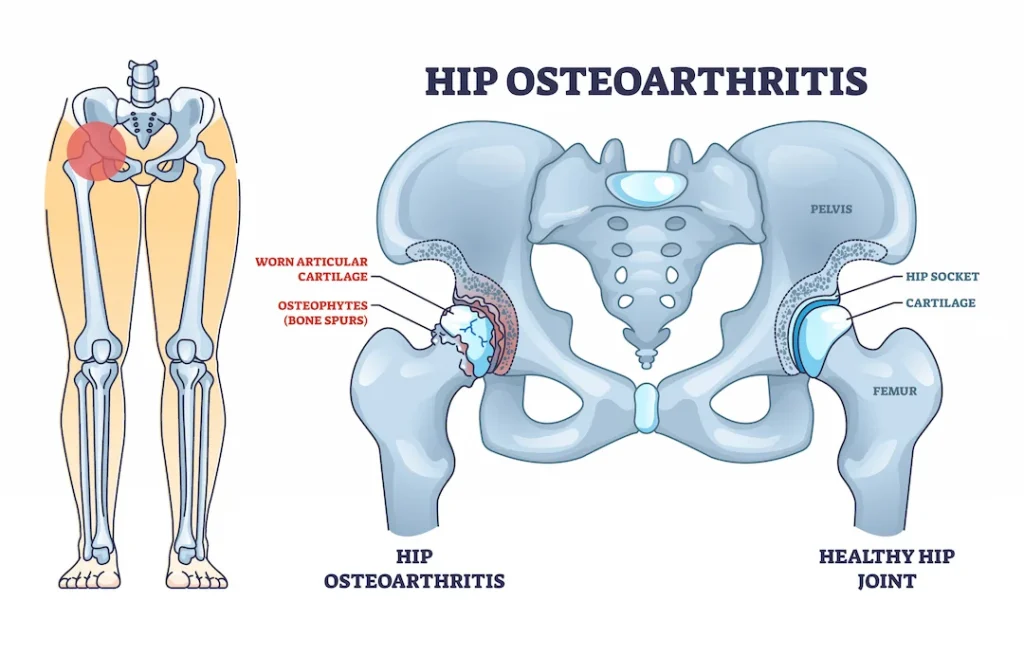
During the surgery, the damaged joint is replaced with a metal or plastic implant. Due to the nature of the surgical incision, soft tissue and major muscles may have to be cut through or moved aside to reach the hip joint.
Whatever the case may be, you’re at the point of needing a hip replacement surgery because of debilitating and functionally limiting hip pain.
Once you’ve been evaluated by an orthopedic surgeon and they determine that you’re a good candidate for a hip replacement, the next question is what type of hip replacement will you be needing?
Two of the most common types that you will see and hear about are the anterior and posterior hip replacements.
What’s the difference between an anterior vs posterior hip replacement? Which is better?
Table of Contents
Anterior Hip Replacement
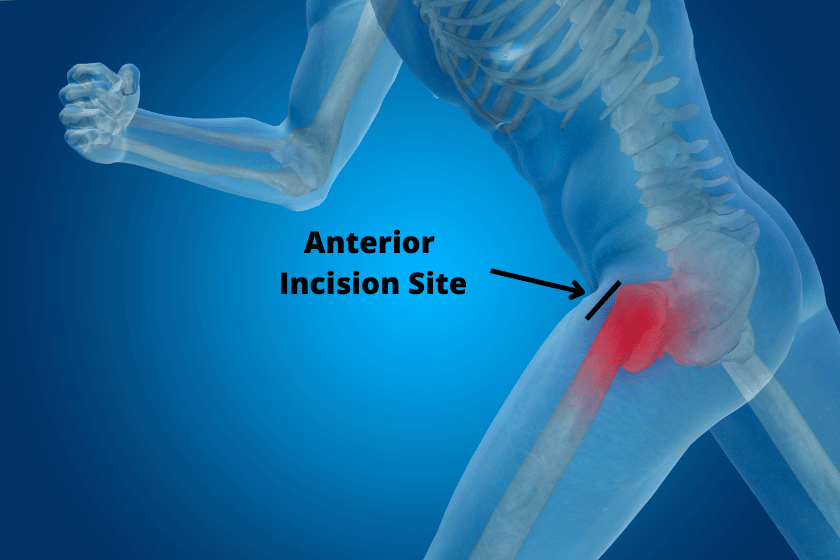
The anterior hip replacement surgery is performed by making a small incision in the front of the hip.
Advantages of Anterior Hip Replacement:
1. the surgical site and technique
An anterior hip replacement has become favored because it’s considered less invasive compared to the posterior hip replacement. There is also notably less muscle damage in the anterior vs posterior hip replacement.
The surgical incision of the anterior approach is relatively small, averaging up to about 4 inches.
The anterior approach avoids cutting through muscle to get to the joint, and instead the surgeon is able to push these soft tissues to the side to access the hip.
This is important because with less trauma to the surrounding tissues, you’ll be up and moving more easily and your recovery time will normally move along more quickly.
2. movement allowance
Most are able to get up and moving sooner with the anterior hip replacement and will have less restrictive movement precautions compared to the posterior hip replacement.
The anterior approach is considered to have a lower risk of post-operative hip dislocation compared to the posterior approach.
Disadvantages of Anterior Hip Replacement:
While the recovery from an anterior hip replacement is considered smoother and more efficient than the posterior approach, there are a couple of cons to consider.
1. positional restrictions
Typically, at least the first 3 months after surgery, although this time frame may vary depending on the orthopedic surgeon, there will be some specific movements and directions to avoid when using the new hip joint.
These include excessive range in the following directions:
- Hip abduction (kicking the leg to the side)
- Hip extension (kicking the leg behind)
- Hip external rotation (turning the leg out)
The purpose in avoiding these extreme ranges of motion is to protect the integrity of the joint, encourage full tissue healing, and avoid excessive strain on the new joint which could potentially result in a dislocation.
2. nerve damage
With an anterior hip replacement surgery there is potential to have numbness in the upper thigh.
Effects to the nerves is a potential risk with all total hip replacements because of the need to move and work around the nerves during the surgery but is slightly higher in the anterior hip replacement.
Remembering the anterior hip replacement is considered less invasive though, this numbness is not necessarily permanent and can resolve in a few months.
Posterior Hip Replacement
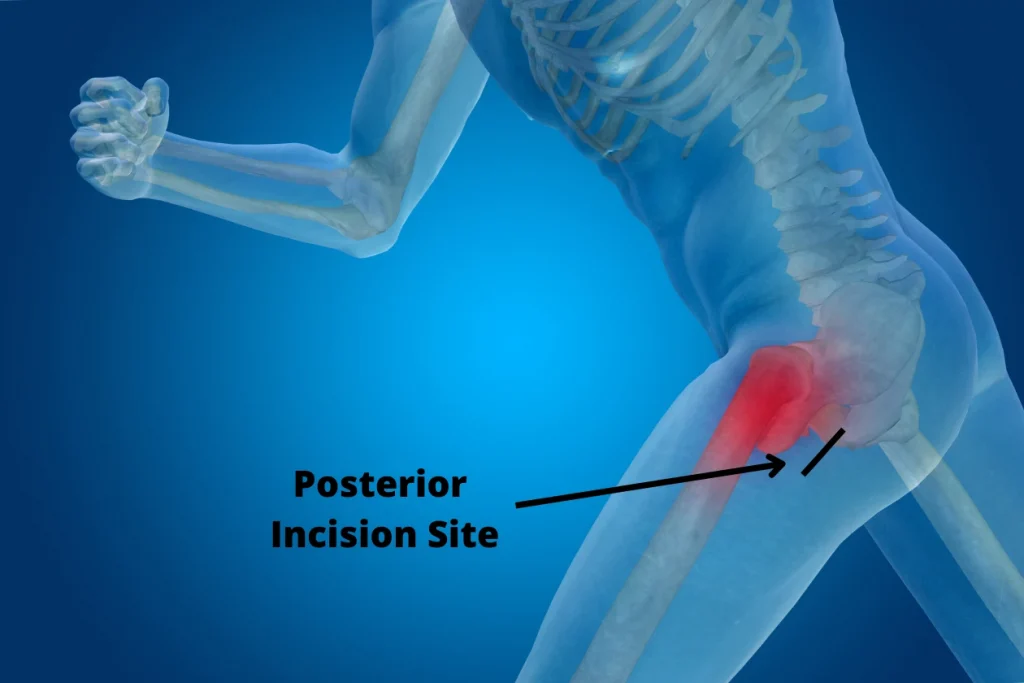
The posterior method is performed by making an incision on the bottom.
Advantages of Posterior Hip Replacement:
1. the surgical site and technique
The positioning of the hip during the posterior approach is considered to allow better visibility vs the anterior hip replacement.
The surgery itself may not take as long as an anterior approach, as the posterior approach is not considered as technical.
2. less chance of nerve damage
The posterior hip replacement is less likely to cause potential nerve damage. As was previously mentioned with the anterior approach, there is potential of numbness in the front of the thigh, but this usually will resolve in a few months.
Disadvantages of Posterior Hip Replacement:
1. the surgical site and technique
While there are pros to the posterior approach technique, there are also cons.
The incision of a posterior hip replacement is typically larger than that of the anterior hip replacement and can reach up to 12 inches long.
It’s good to note though that there is a minimally invasive posterior approach that will allow for a smaller incision to be made.
This technique also will cut through muscle and other soft tissue vs the anterior hip replacement moving around the soft tissues. This can negatively affect the use and activation of the muscles after the surgery.
2. Positional restrictions
The movement restrictions required after a posterior hip replacement surgery are considered more restrictive and limiting compared to those of the anterior hip replacement.
They include avoidance of the following positions and motions:
- Hip flexion beyond 90 degrees (bending at the hip)
- Hip adduction (no crossing the legs)
- Hip internal rotation (no turning the leg inward)
Similar to the anterior approach hip replacement, the length needed to follow these positional restrictions will typically be at least 3 months after surgery but could vary depending on your surgeon’s recommendations and your particular hip.
These restrictions can be much more challenging to abide by as they are more functionally limiting.
You will not be able to perform activities such as a deep squat, sitting on a very low surface, or crossing the legs.
You may also be given a large pillow to keep between the legs while sleeping to avoid breaking these precautions.
Due to the location of the posterior hip replacement approach and the strict movement precautions, there is considered a higher risk for dislocation.
3. recovery time

The posterior approach is considered to have a longer recovery time vs the anterior approach.
Part of this, as mentioned above, is because muscle and soft tissue are cut through in order to access the hip.
This, plus consideration that the positional restrictions are more functionally limiting, can slow recovery time and return to activity.
Final Verdict

So, which is better? The anterior vs posterior hip replacement surgery?
You’ve seen the pros and cons of each, but other factors may determine which surgery is right for you. Some of these factors will include the following:
- The training of the surgeon performing your surgery: Some may be trained in only one approach, while others may be trained in both
- The reason behind the need for a hip replacement: Natural wear and tear vs a traumatic injury
- Body habitus: Certain body shapes and sizes may be more appropriate for one type of hip replacement over another
- Prior activity level: Your prior level of function and activity level may assist in determining which approach is better due to varying recovery times anticipated with each
Ultimately, the decision will come down to a conversation between you and your surgeon, as well as their professional recommendation.
FAQ:
How long are movement precautions in place after a hip replacement?
The common time frame to avoid certain positions and hip movements is around 3 months. This can be less or more depending on the status of your individual hip and the recommendations given by the surgeon.
What is the best way to control pain after surgery?
Your surgeon will prescribe pain medication to assist in pain management after surgery. It’s also recommended to ice regularly (up to 15-20 minutes at a time, several times per day) and be sure to attend physical therapy for the best recovery and pain management.
How long is the recovery time after a total hip replacement?
Recovery time can vary depending on the individual and the status of the hip before and after surgery. Normally, anticipate anywhere from 1-3 months of rehab on average.
Even once you’ve completed physical therapy, your first full year after surgery is considered a part of the full recovery time.










